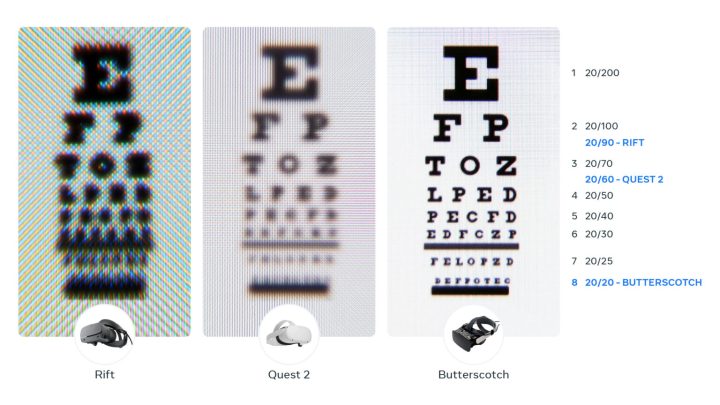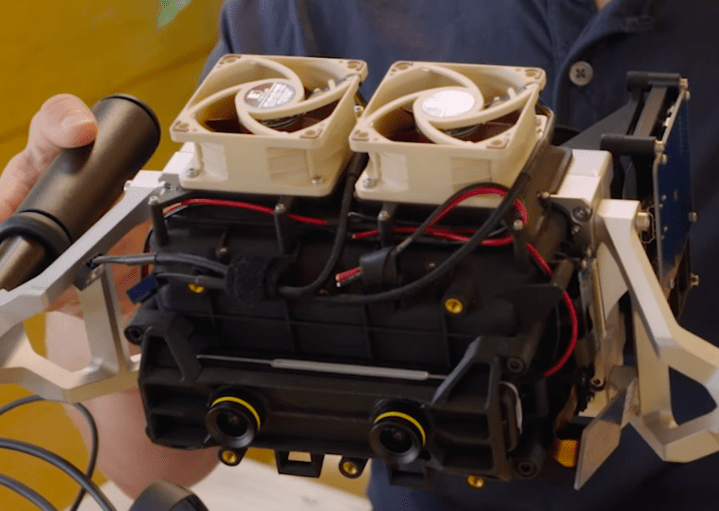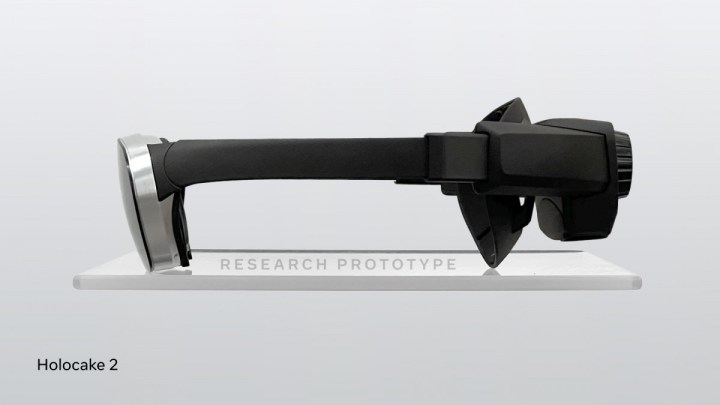Meta (formerly Facebook) finally has details to share about its developments in VR hardware.
In a recent short video clip, Meta CEO Mark Zuckerberg showcased technologies for at least four VR headset prototypes the brand is currently working on that might translate into a consumer product later this year. The developments stand to improve on the current specs of the Oculus Quest 2 headset and offer a preview of where things are headed.

The four prototypes focus on such things as solving issues around resolution, focal depth, optical distortion, and HDR. It’s clear that each of these aren’t meant to be standalone products, but are instead experiments that target specific technologies in developments, though Zuckerberg ends his video with the HoloCake 2 prototype, which puts these technologies together in a lightweight form factor that uses holographics displays.
Starting with the first demo, the “Butterscotch” prototype, the focus is on resolution. Meta aims to meet 20/20 vision with the associated headset display. The idea is to allow users to be able to read the smallest letters on an eye test chart. The prototype technology for this is called “retinal resolution,” Zuckerberg said, which “means getting up toward 60 pixels per degree.”

As NotebookCheck notes, this would be 2.5 times more pixel-dense in half the field of view than the current Quest 2. The Quest 2 supports 20/60 vision, by comparison.
The Focal depth prototype aims to account for how eyes might shift away from focus objects in VR. The prototype technology is called “Half Dome,” which uses eye-tracking and varifocal optics to provide a greater sense of depth from any distance. Zuckerberg notes that unlike with a traditional monitor, “in VR and AR, you need to be able to focus on things that are very close and very far from you.”
Zuckerberg also noted that optical distortion is a problem that must be fixed, and it requires a solution that is “imperceptible to the human eye.”

Finally, with the HDR prototype, Zuckerberg showcased “Starburst,” which he calls the first known HDR VR system. Zuckerberg notes that nature is 10 or even 100 times brighter than our modern TVs and monitors, which is why Meta built Starburst. Zuckerberg says it can reach up to 20,000 nits of brightness.
In conjunction with the other prototypes, the Starburst technology is included in the Holocake 2 headset. The headset is a working prototype that can “already play PC VR experiences,” Zuckerberg said.
These details are Meta’s first solid VR hardware news since October, when it first teased the Butterscotch 20/20 vision prototype, UploadVR noted.
Long-standing rumors have suggested Meta is developing a VR headset that is currently known as “Project Cambria.” News about the headset surfaced last year, but it has been hard to nail down exactly what function the device might have, according to NotebookCheck.

Analyst Ming-Chi Kuo, has suggested that the headset could be an Oculus Quest 2 Pro model, indicating it might not be gaming-focused.
Meta notably did not unveil any hardware at its Quest Gaming Showcase 2022 virtual event in April, however, it did comment about the state of the metaverse and that it is still very much an ongoing project.
“We think the metaverse will build on this foundation to become the next generation of the internet and the next evolution in social technology,” said Ruth Bram, Meta executive producer. “Both the hardware and software need more work, and it may take five to 10 years to fully bring it to life.”
Zuckerberg made a similar statement about the development of Meta’s prototype VR technology. “There’s still a long way to go but I’m excited to bring all this tech to our products in the coming years,” he said.
Editors’ Recommendations




